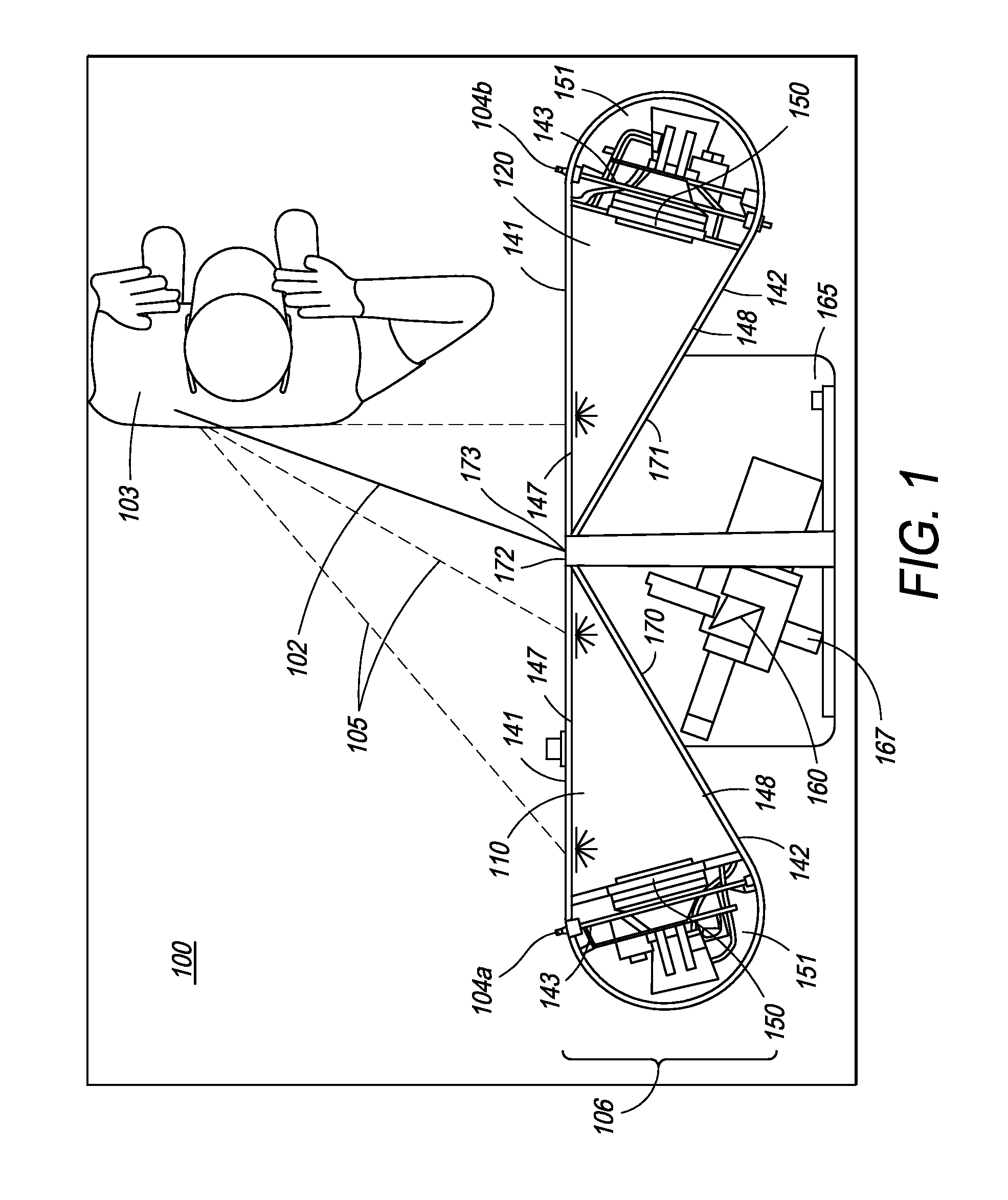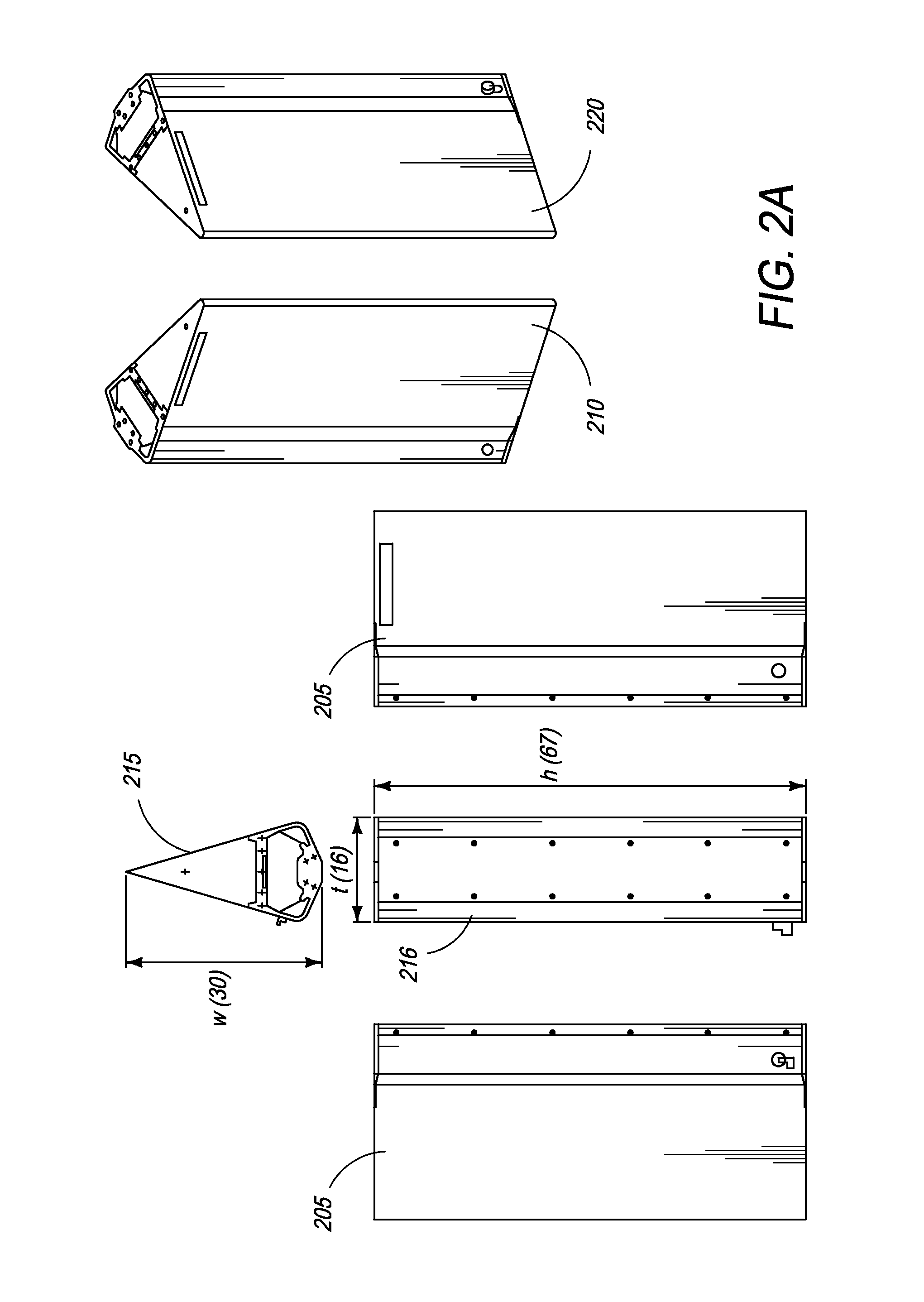Personnel screening system
a screening system and personnel technology, applied in the field of security systems, can solve the problems of inconvenient portability, difficult and time-consuming use and/or transportation, and the size of the security system is presently limited in the ability to detect contraband, weapons, explosives, and other dangerous objects hidden under clothing. the effect of reducing the required footprint of the system
- Summary
- Abstract
- Description
- Claims
- Application Information
AI Technical Summary
Benefits of technology
Problems solved by technology
Method used
Image
Examples
Embodiment Construction
[0061]The present specification is directed towards personnel screening systems comprising modular components, including detector and source units. The modular components of the present invention allow for compact, light and yet sufficiently rugged overall structure that can be disassembled for ease of transportation and is also simple to reassemble at a required site for inspection. The novel modular architecture of the screening system of the present invention also allows for the modular components to be fabricated separately and be quickly snapped on for assembly. Similarly, the modular components can be easily disassembled for ease of service access to the selective components and / or for packaging for subsequent transportation.
[0062]The present specification is also an improved method for screening individuals at security locations without exposing individuals to high radiation and retaining the efficiency of the screening process. The disclosed system allows for maximum threat ...
PUM
| Property | Measurement | Unit |
|---|---|---|
| diameter | aaaaa | aaaaa |
| diameter | aaaaa | aaaaa |
| decay time | aaaaa | aaaaa |
Abstract
Description
Claims
Application Information
 Login to View More
Login to View More - R&D
- Intellectual Property
- Life Sciences
- Materials
- Tech Scout
- Unparalleled Data Quality
- Higher Quality Content
- 60% Fewer Hallucinations
Browse by: Latest US Patents, China's latest patents, Technical Efficacy Thesaurus, Application Domain, Technology Topic, Popular Technical Reports.
© 2025 PatSnap. All rights reserved.Legal|Privacy policy|Modern Slavery Act Transparency Statement|Sitemap|About US| Contact US: help@patsnap.com



